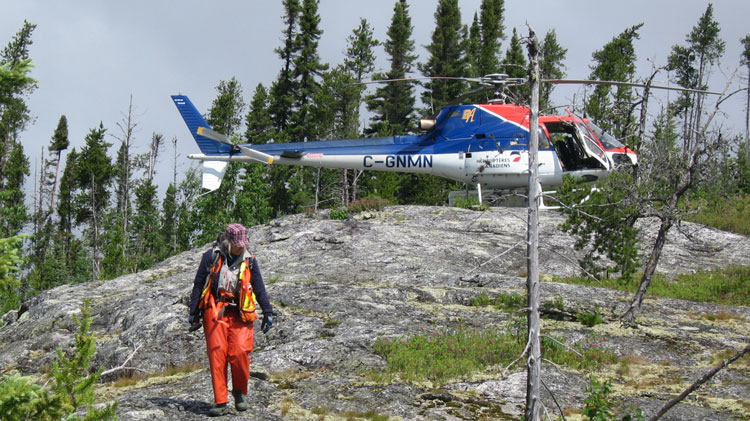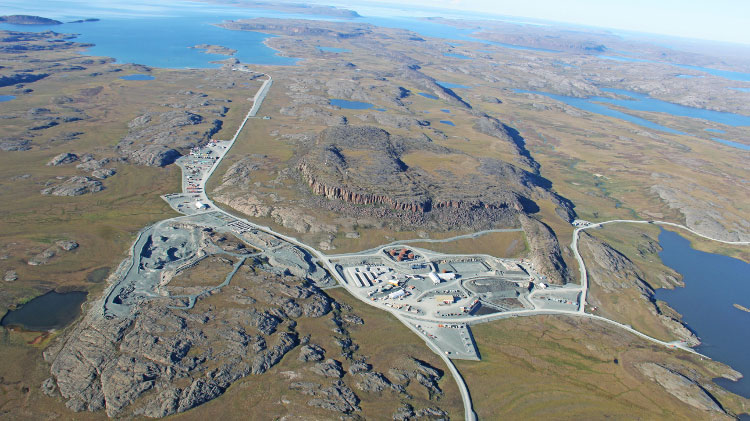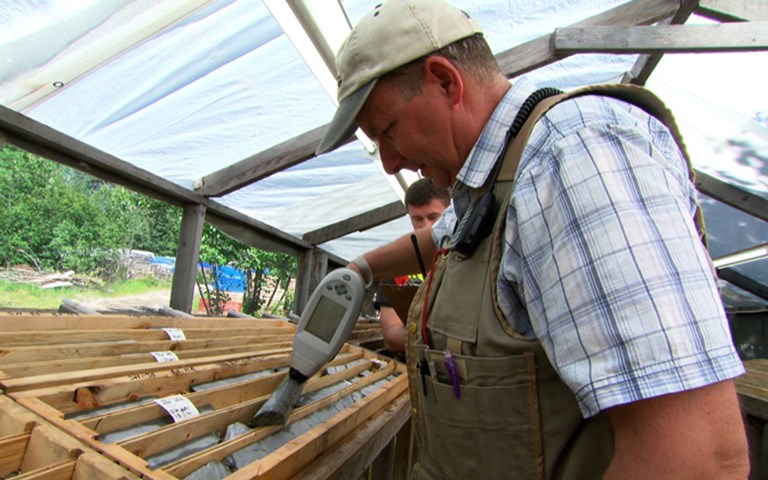The KSM project holds one of the world’s largest undeveloped copper/gold deposits. Courtesy of Seabridge Gold
Project leaders for Seabridge Gold have been taking a deliberative, proactive approach to the company’s KSM (Kerr-Sulphurets-Mitchell) project in northwestern British Columbia. Construction has yet to begin at the 4,925-hectare site, but the company’s plans have evolved dramatically since it discovered the Mitchell deposit in 2006.
Located 35 kilometres from the Alaskan border, KSM is one of the world’s largest undeveloped gold/copper deposits, with Proven and Probable Reserves of 38.2 million ounces of gold and 9.9 billion pounds of copper. Seabridge initially envisioned KSM as an open-pit project at three deposits but is now planning a mix of underground block cave and open-pit methods at four distinct deposits: Kerr, Sulphurets, Mitchell, and Iron Cap. The block caving method will eliminate 2.3 billion tonnes of waste rock stripping, which will significantly reduce the mine’s environmental impact and the size of the rock storage facility. When it is built, the project will consist of two separate sites. The first will include the mines, as well as the water management and treatment facilities. This will connect to the processing and tailings management area via two 23-kilometre-long tunnels.
The KSM property changed hands a number of times before being acquired by Seabridge in 2000. Exploration began in 2006, and Seabridge initiated the environmental assessment process with provincial and federal regulators in 2008. The province approved the project last July, and the federal government followed suit five months later.
Building relationships
As part of the environmental assessment process, Seabridge spent more than six years negotiating with First Nations in the area, incorporating many of their concerns into the site design in the early stages of the process. Portions of the project fall within the Nass Area, a 26,000-square-kilometre region over which the Nisga’a Nation has constitutionally protected rights to public consultation and its own requirements for environmental assessments.
The Nisga’a Nation worked closely with Seabridge to develop appropriate environmental conditions, and the two parties entered into a comprehensive benefits agreement last June. Seabridge has also signed an environmental agreement with the nearby Gitanyow First Nation and remains in dialogue with other First Nations who use the area.
Edward Allen, communications director for the Nisga’a Lisims government, says the Nisga’a Nation’s overall experience with Seabridge has been “very positive.” He adds that even in the early stages of the project, it was clear that Seabridge had read and understood the Nisga’a final agreement. Signed in 2000, the agreement is the first modern treaty in British Columbia. “Our work with Seabridge was a welcome point of departure from some of our earlier pre-treaty experiences.
“It was clear that Seabridge wanted to approach this project in a spirit of partnership and cooperation,” Allen says. “It was a relatively straightforward process to identify our concerns and for Seabridge to incorporate them into its plans for mining activities in the Nass River area.”
As Peter Williams, Seabridge’s senior vice-president of technical services, explained, KSM’s 52-year mine life and daily throughput of 130,000 tons forced the company to adopt a “robust” approach to the environment. “You have to give world-class projects the respect they deserve,” he says.
Chris Hamilton, executive project director for the B.C. Environmental Assessment Office, was responsible for the provincial assessment. He says he was impressed with Seabridge’s attitude throughout the process: “They were responsive and they were interested in doing the right thing, which is kind of a treat for regulators.”
Design changes
The Nisga’a Nation was particularly concerned about the potential impact the project would have on water quality in the region. In response, Seabridge made significant design changes to the tailings and water management facilities. Both the access and discharge points of the tailings ponds were moved from Teigen Creek to the Treaty Creek Valley to protect the local salmon habitat and other vulnerable wildlife in the area. This move involved some redesigns of the facility, as the Teigen and Treaty creeks are on opposite ends of the valley. The tailings dams are nestled within this valley, and the buttressing of the valley walls offers the dams good natural protection. The company voluntarily added a third cell in the centre of the tailings facility with a geomembrane liner to collect and store the potentially acid-generating waste. It will be one of just a few lined tailings ponds in the province, adding a cost of $131 million. The total cost of the third cell will be $256 million.
Seabridge also more than doubled the size of the water treatment facility and is teaming up with local water treatment firm BioteQ Environmental Technologies to develop an innovative selenium water treatment technique using ion exchange. The company is also avoiding any use of surface water drainage ditches for primary water control and management in favour of a safer, yet much more expensive, 50-kilometre-long network of twinned diversion tunnels. Ditches will still be used for some secondary water diversion. The design initially included surface ditches, but the diversions were moved underground in the early stages of the environmental assessment to enhance the robustness of the water management system.
Environmental impact
Williams says that from day one, design plans revolved around protecting the downstream environment, with a focus on determining how the mine could operate without disrupting the natural balance of the ecosystem. For instance, the water treatment facility will release water back into the stream at Sulphurets Creek’s natural flow rate to ensure the ecosystem is unaffected by a change in flow rate. Water with elevated levels of selenium will be treated in the selenium treatment plant, then treated again with the rest of the contact water and seepage at the main water treatment facility prior to release. “We’re stopping water because it’s been impacted by the mine,” Williams explains. “We have to be able to treat it and get it back into the creek the way the creek wants it.”
Vice-president of environmental affairs Brent Murphy elaborates on Seabridge’s philosophy: “We stood downstream and looked back up towards the mine site, and asked ourselves: ‘How can we operate this safely, without impacting the downstream environment?’ rather than ‘What do I have to build here in order to operate?’”
Economics
Seabridge’s efforts obviously come at a cost. The company claims its design changes will add nearly $500 million in capital and operating expenses over the life of the mine. Yet Williams says he believes this is simply the cost of getting the project done properly. He points out that many projects of a similar scale often fail to deliver on extravagant promises, which is disappointing for investors. In contrast, he says Seabridge is “putting in a production schedule and a capital schedule that’s realistic.” The group gave the project, with start-up capital costs estimated at US$5.31 billion, a five-year construction estimate. Seabridge has spent $205 million on KSM since 2006.
“We’re not going to reduce the construction timeframe so we can save net present value,” Williams explains. “We want to take proper controlled steps in the field so the environment always comes first.”
Seabridge is still looking for a partner to bring the site to production, and Williams acknowledges that its approach has made his search more difficult. Yet major mining companies that have been “stung by pretty major disappointments” and stuck with unexpectedly high costs are actually quite pleased with Seabridge’s work on KSM.
As it waits for the remaining permits and searches for a partner, Seabridge has assembled an independent geotechnical review board to look at the design, construction, operations and closure of the water storage dam and the tailings management facility. After years of experience elsewhere in the field, Williams and Murphy are strong believers in Seabridge’s approach, saying many of the company’s voluntary efforts ought to become standard industry practice. “I think it’s a new way of looking at these major sites,” Williams says.




